9Eastern Hemlock
Tsuga canadensis
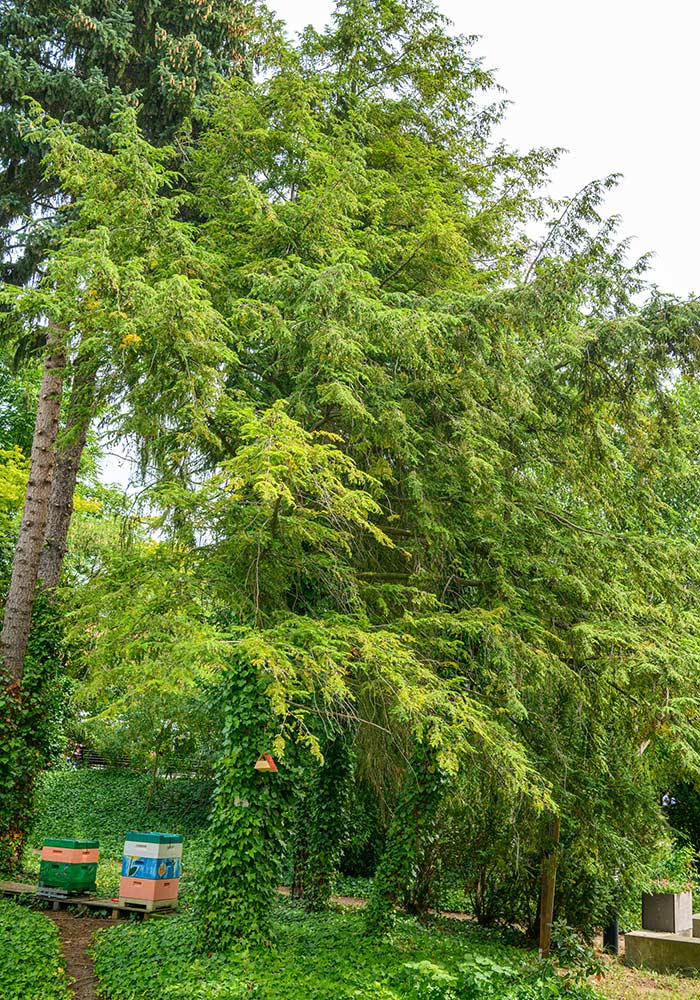
The ninth tree on the tour is an Eastern or Canadian hemlock, botanical name Tsuga canadensis, from the pine family or Pinaceae. It stands at the passageway between the library and the Life Science Learning Lab.
The botanical name Tsuga canadensis hints at its home country, in North America. It is the symbol of the US state of Pennsylvania. It was introduced to Europe around 1736. In Berlin and Brandenburg it is rare. In German it is also called Schierlingstanne. The term Schierling is the translation of the English term hemlock. This name comes from the smell that the needles of the hemlock give off when they are crushed, which is similar to the smell of goutweed, a relative of hemlock.
Eastern hemlocks are evergreen trees with trunks that grow straight upwards, all the way to the top. From the trunk, branches with overhanging, arching twigs and shoots extend horizontally, giving the Eastern hemlock its typical appearance. The tree grows about 20 meters high and up to seven meters wide. The soft evergreen leaves, needle-shaped, are relatively short at two centimeters long, rounded at the tips, glossy dark green on top and with two white bands underneath. The numerous cones are about two and a half centimeters long and egg-shaped.
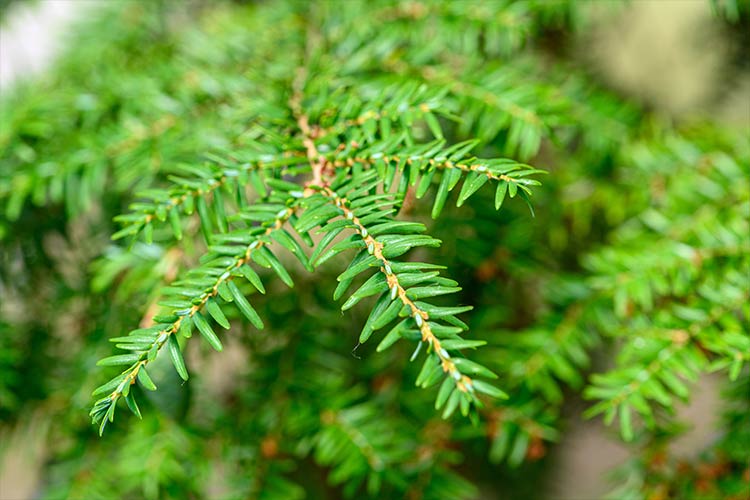
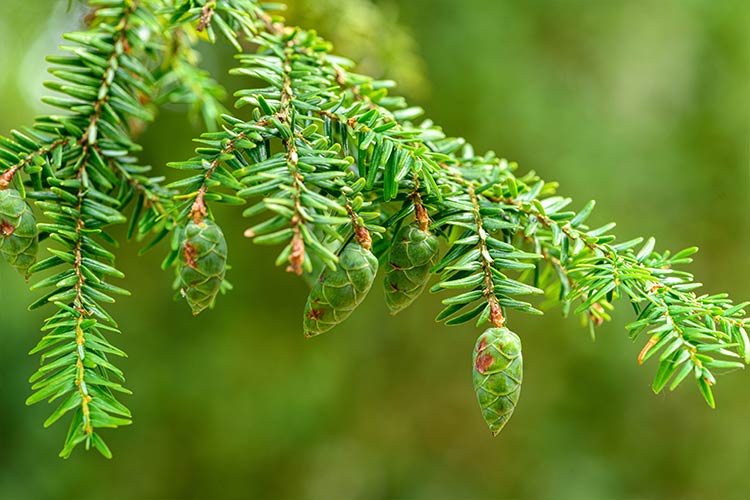
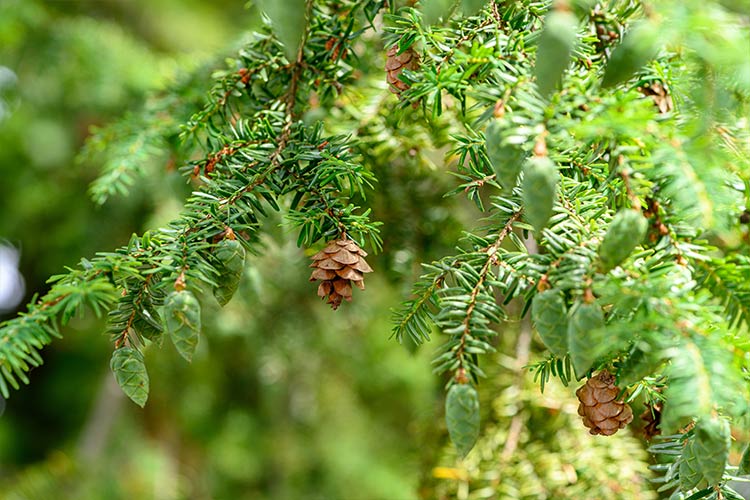
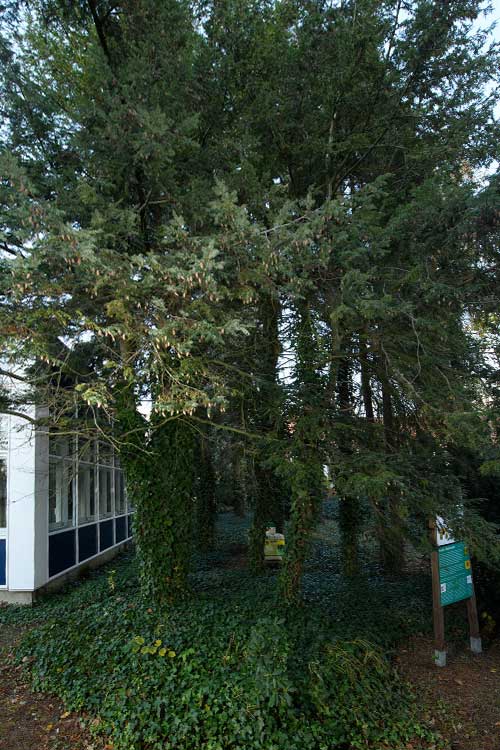
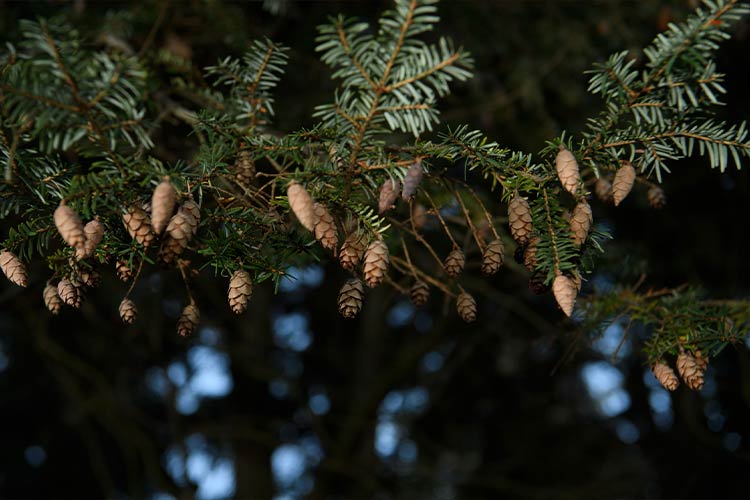
The bark is yellowish at first and turns grayish brown with age. In May, male specimens develop globular yellow flowers.
The Eastern hemlock prefers nutrient-rich, well-drained soils and sunny to semi-shady sites from sea level to about 1700 meters in elevation. It is hardy to frost, and does well in nutrient-rich, well-watered clay soils. Soils can be alkaline as well as acidic. It not only tolerates prolonged drought, but also does well in very windy and hot sites. Under favorable conditions it can reach an age of up to 1,400 years.
The Eastern hemlock has several practical uses. Needle oil is extracted from the branch tips; it contains essential oils and is used to treat diseases of the respiratory organs. The bark and young tips of the twigs also contain essential oils, tannins and bitter substances, which make them interesting for use in respiratory catarrh. Dried parts of the plant are used for tanning and the resin is also sold as Canada balsam. As a noble turpentine it is used to produce the paints used in oil painting. The high optical quality of this turpentine makes it useful in optics. When cured, its refractive index is similar to that of ground glass. It is therefore suitable to invisibly fill in cracks in lenses. In microscopy, it is used to permanently embed water-free specimens.